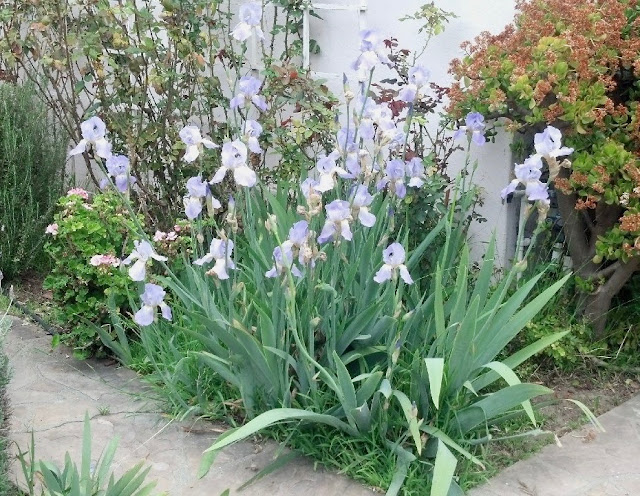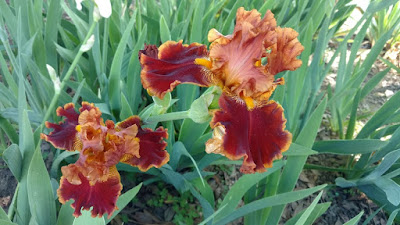
|
|
These blue irises are family heirlooms and have been blooming consistently for more than a century -- divided and replanted all along the way. (Photos: Debbie Arrington)
|
This easy-care perennial benefits from division, replanting
Divide and bloom; that’s the secret to bearded irises.
They’re such a persistent (and fast-growing) perennial, they need to be divided every three years or so. Otherwise, their rhizomes – their thick fleshy roots – overcrowd each other. If too crowded, they don’t bloom.
If your bearded irises have not bloomed in more than a year (but still look relatively healthy), they likely need to be divided.
Traditionally, August is the best time to divide and replant irises in Sacramento. With a slight break in the heat and smoke expected later this week, now may be a good time to tackle your iris beds.
Division and replanting are the only major work these easy-care plants need. So, a little TLC now will pay off for years to come.
Dig up the main clump; some rhizomes will look old and withered. Cut those off and discard. The other segments can be cut or broken apart. Make sure there’s at least one “fan” of leaves on each segment to be replanted. Trim the leaves to about 4 to 6 inches long. And, if you know, write on the leaves the iris variety or color. (A Sharpie works well for this.) This helps keep them sorted when you replant – and when you share irises with friends.
Preparation of the planting bed will assure beautiful blooms for several seasons to come. Even though irises are planted very shallow, dig down at least 10 to 12 inches and work the soil, breaking up any large clumps. Spade in some well-aged compost and bone meal to promote big flowers and root development.

|
These bronze irises are eye-catching. In Sacramento, irises are
best divided and replanted in August.
|
Irises appreciate good drainage and full sun. If your soil is heavy clay, add some coarse sand along with the compost and bone meal. Don’t use high-nitrogen fertilizers on irises; it promotes lots of leaves but no flowers.
To replant, form two parallel trenches with a ridge down the middle. Put the rhizomes on top of the ridge with their stringy roots running down into the trenches on either side. Space each rhizome about 12 to 18 inches apart.
The plants will grow (and rhizomes increase) in the direction the fans of leaves are pointing. Arrange the rhizomes so their fans are all pointing (at least generally) the same direction; that keeps them from overcrowding too quickly. If arranged in a circle, place the fans pointing away from the center.
Once placed, gently press the rhizomes into that ridge, making sure the top of the rhizomes will be just above soil level. Then, fill in the side trenches with soil.
Water deeply – and wait. The rhizomes will start producing fresh leaves in early fall. Water the plants occasionally so they don’t dry out, but otherwise leave them alone.
And remember to share some of those freshly dug irises with friends. One large clump can produce several new plants – many more than is needed to replant the same space. Those extra rhizomes should be replanted within two weeks.
For more on irises:
www.irises.org
.


